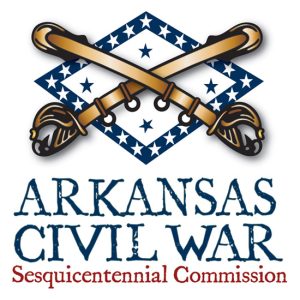calsfoundation@cals.org
Skirmish at Ferry Landing
aka: Skirmish at Ashley's Mills
| Location: | Pulaski County |
| Campaign: | Little Rock Campaign |
| Date: | September 7, 1863 |
| Principal Commanders: | Brigadier General John Davidson (US); Colonel Robert Newton (CS) |
| Forces Engaged: | Seventh Missouri Cavalry (US); Fifth Arkansas Cavalry (CS) |
| Estimated Casualties: | None (US); 1 killed, 3 wounded, 2 captured (CS) |
| Result: | Union victory |
Part of Federal efforts to capture Little Rock (Pulaski County), this engagement opened an avenue for Union forces to cross the Arkansas River to the east of the city. Confederate cavalry forces were pushed across the river to the west bank, where they remained for the remainder of the campaign.
Brigadier General John Davidson commanded the cavalry division in Major General Frederick Steele’s Federal army as it approached Little Rock from Helena (Phillips County). Confederate cavalry guarded the approaches that the Federals were likely to take. Due to the death of Brigadier General Lucius Walker, Colonel Archibald Dobbins was commanding the Confederate cavalry division tasked with watching the area near Ashley’s Mills. Stretched thin, Dobbins’s command could place only the Fifth Arkansas Cavalry on the north side of the river, with the remainder of the division on the south bank. Camped near Ashley’s Mills, the regiment guarded a road leading to a crossing of the Arkansas River known as Terry’s Ferry.
On the morning of September 7, Federal cavalry units moved against the Confederate regiment in an effort to push to the river. Colonel Robert Newton, commander of the regiment, had been promoted to temporary command of Colonel Dobbins’s brigade the previous evening. That morning, Newton traveled to the brigade headquarters, leaving Major John Bull in command. Receiving word that Union troops had attacked, Newton ordered Bull to hold as long as possible and slowly move back to the Arkansas River.
Newton returned to his regiment, finding them being slowly pushed back in the face of overwhelming numbers. Realizing that the regiment would likely have to retreat across the river, Newton ordered a second regiment to the south bank of the crossing and prepared to stop the Federals if they pursued. Over the course of several hours, Newton’s command slowly fell back to the river while ensuring that the Federals did not launch a flanking maneuver and cross the river at another point. By 10:00 a.m., the Confederates could no longer hold the enemy and retreated in good order to the south bank of the river. The Federals did not pursue, instead going into camp at Ashley’s Mills and Terry’s Ferry
Although the fighting was described as being “sharp,” the Federal forces reported no losses, while the Confederates lost one killed, three wounded, and two captured. One of the captured soldiers was Dobbins’s brigade adjutant.
The Confederates’ fight to keep the Union army from reaching the Arkansas River was lost, and now the Federals were just outside of the city. With Terry’s Ferry crossing in Federal hands, the Union army had a way across the last major obstacle before taking Little Rock.
For additional information:
Christ, Mark K. Civil War Arkansas, 1863: The Battle for a State. Norman: University of Oklahoma Press, 2010.
The War of the Rebellion: A Compilation of the Official Records of the Union and Confederate Armies. Series 1, Part 1, Vol. 22. Washington DC: Government Printing Office, 1889.
David Sesser
Henderson State University
 Civil War Timeline
Civil War Timeline Military
Military ACWSC Logo
ACWSC Logo 



Comments
No comments on this entry yet.